Matthias Grünewald's paintings are masterpieces of the late Gothic period. For four years, restorers worked on his famous Isenheim Altarpiece in Colmar, Alsace. Now it looks almost like new.
-
 Fresh treatment for the Isenheim Altarpiece
Fresh treatment for the Isenheim Altarpiece
To comfort the sick
Incarnation (right) and Christ's resurrection (left): Matthias Grünewald's walkable altar consists of eleven pictorial parts and a central shrine full of sculptures, carved by Niklaus von Hagenau. The altar was commissioned by the Antoniter monastery in Isenheim near Colmar and was dedicated to Saint Anthony.
-
 Fresh treatment for the Isenheim Altarpiece
Fresh treatment for the Isenheim Altarpiece
Courage to live from pictures
Antonius is the patron saint of the Antoniter order, which maintained a monastery hospital near Colmar in Grünewald's time. His altar was intended for the church of the hospital. People who had fallen ill with the “Antonius Fire”, a widespread and almost incurable poisoning caused by ergot fungus, were placed in front of the altar. In the face of the holy pictures they should draw new courage to live.
-
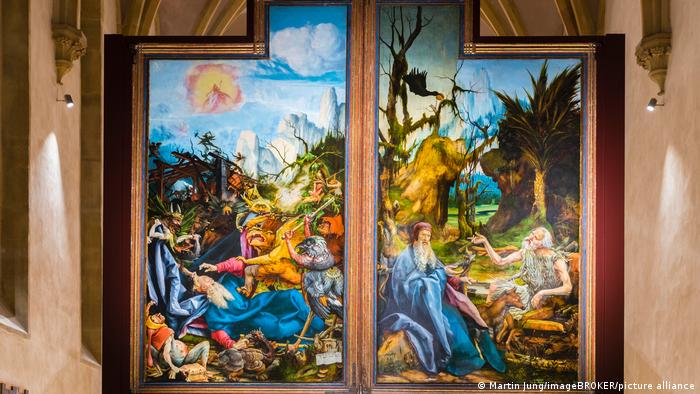 Fresh treatment for the Isenheim Altarpiece
Fresh treatment for the Isenheim Altarpiece
Of demons and peaceful conversation
Matthias Grünewald painted what are probably the most gruesome altarpieces north of the Alps. The left panel shows the temptations of Saint Anthony. Antonius lies on the ground where demons torment him. In contrast, on the right is Saint Anthony Abbas deep in peaceful conversation with Paul the Hermit. A raven with a loaf of bread in its beak flies down towards them.
-
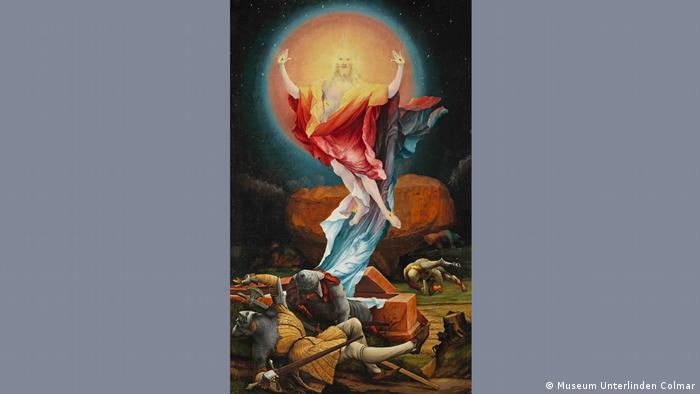 Fresh treatment for the Isenheim Altar
Fresh treatment for the Isenheim Altar
Resurrection and Ascension
Jesus rises from the tomb while the guards tumble dazedly in their armor and swords. The upper body and face of the resurrected are immersed in the light. Jesus dematerializes. The painter's idea for the picture still amazes today. Grünewald's depiction is considered the most radiant resurrection painting in art history.
-
 Rejuvenation for the Isenheim Altarpiece
Rejuvenation for the Isenheim Altarpiece
The Secret of the Rose
Gruinewald created the altarpiece as a convertible altar, which can be opened and closed depending on the time of the church year and the service regulations. This is how the different display sides became visible. This scene with the Madonna and her newborn Jesus is the central Christmas image of the Isenheim Altarpiece. Reversing the image, Mary's red dress appears as a blooming rose facing the earth.
-
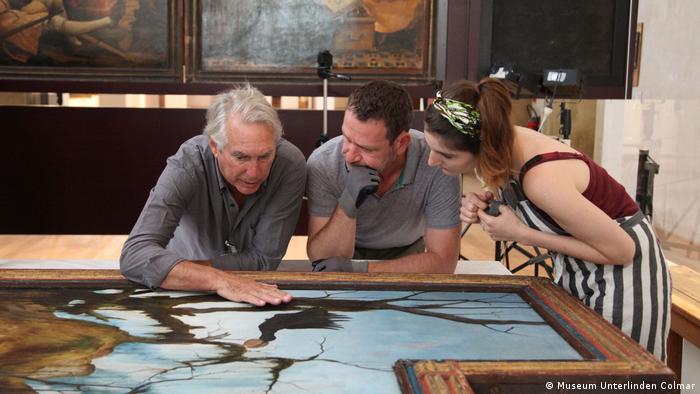 Fresh treatment for the Isenheim altar
Fresh treatment for the Isenheim altar
Which made even Thomas Mann shudder
The common people were only allowed to look at the panels through the rood screen – a kind of barrier. Only fragments of the masterful depictions penetrated the dim light. Grünewald's imagery was more excessive than that of his contemporaries Dürer or Cranach. Centuries later, the passion scene even made Thomas Mann shudder. Freshening up the altar was a challenge for the restorers.
-
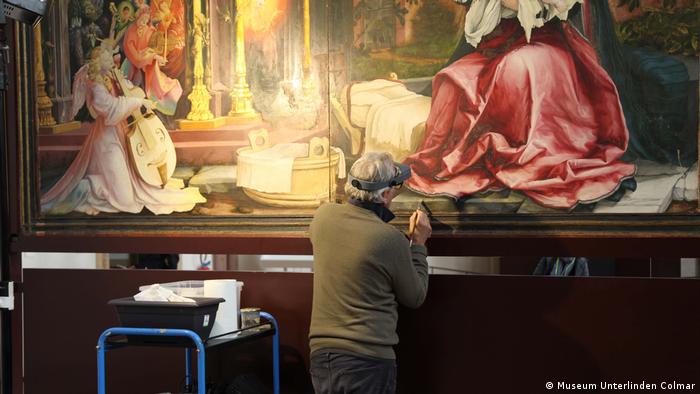 Freshness treatment for the Isenheim Altarpiece
Freshness treatment for the Isenheim Altarpiece
Four-year freshness treatment
The restoration of the Isenheim Altar took four years. The restorers worked practically under the eyes of the visitors. Old overpaintings were removed, original colors exposed, dirt removed. Before being restored to the Musée Unterlinden, the images were X-rayed and examined with 3D microscopes. The restorers also took pigment samples.
-
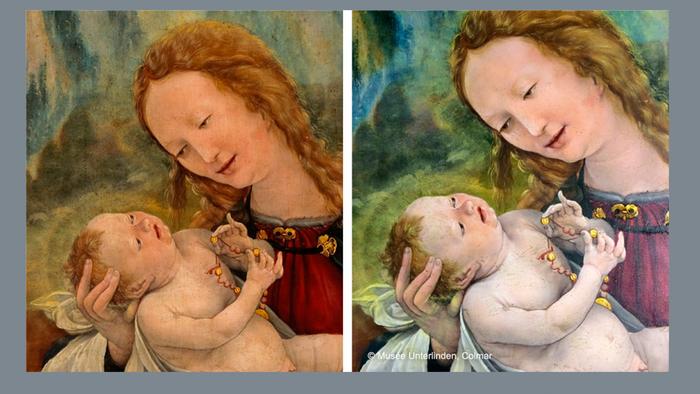 Fresh treatment for the Isenheim Altarpiece
Fresh treatment for the Isenheim Altarpiece
Before and after
A difference like day and night: Before the restoration, a yellowish film had settled on Grünewald's depiction of Mary with her newborn child. The restorers removed the annoying varnish. Now the touching motif shines in fresh, bright and above all natural colors. “Grünewald would have been delighted with our work,” says chief restorer Antony Pontabry.
-
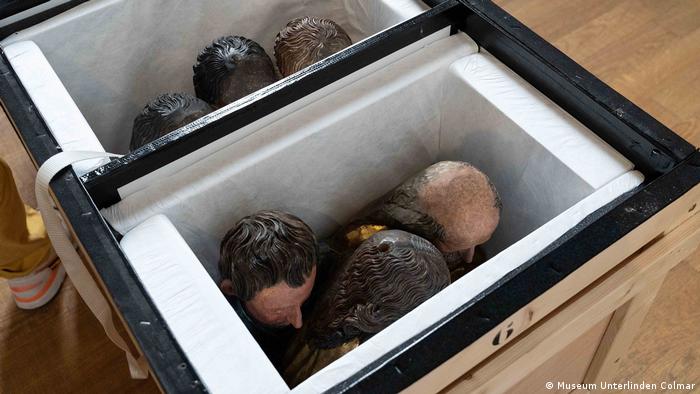 Fresh treatment for the Isenheim Altar
Fresh treatment for the Isenheim Altar
Secrets with technology aired
The panel paintings and colored sculptures were first X-rayed. Chemical and physical analyzes directly on the works of art or on micro-samples revealed the composition of the pigments, binders and dyes. The restoration cost around 1.4 million euros.
-
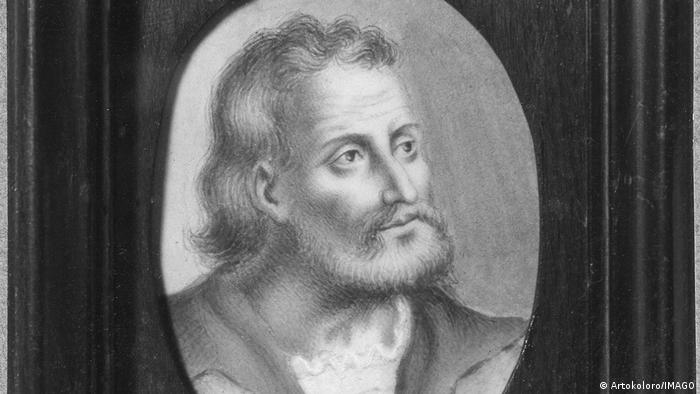 Fresh treatment for the Isenheim Altar
Fresh treatment for the Isenheim Altar
painter, well builder, soap maker
As a painter and draftsman, Matthias Grünewald, alias Mathis Gothart-Nithart (around 1480 to 1530), thoroughly stirred up Renaissance painting. But Grünewald, who was considered a strict, ascetic man and was open to new ideas, also worked as a site manager, well builder and soap maker. Presumably, Grünewald was born in Würzburg and died in Halle an der Saale.
-
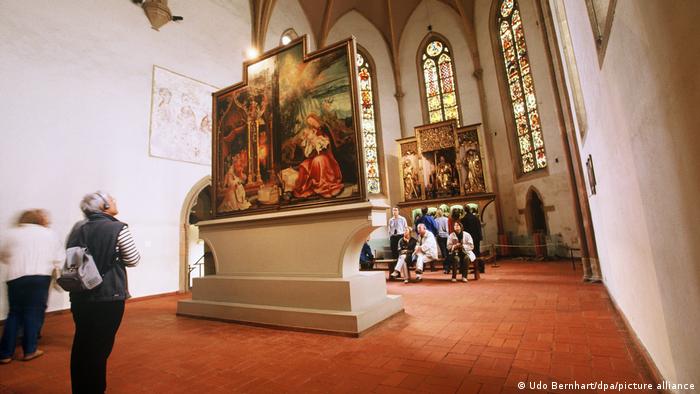 Fresh treatment for the Isenheim Altarpiece
Fresh treatment for the Isenheim Altarpiece
Included in the World Cultural Heritage
The Isenheim Altarpiece is a late Gothic masterpiece that owes its fame to two 16th-century German masters. In 1793, in the midst of the turmoil of the French Revolution, he was brought from Isenheim to Colmar. Today the altar can be admired in the Musée Unterlinden. It has long been a World Heritage Site.
-
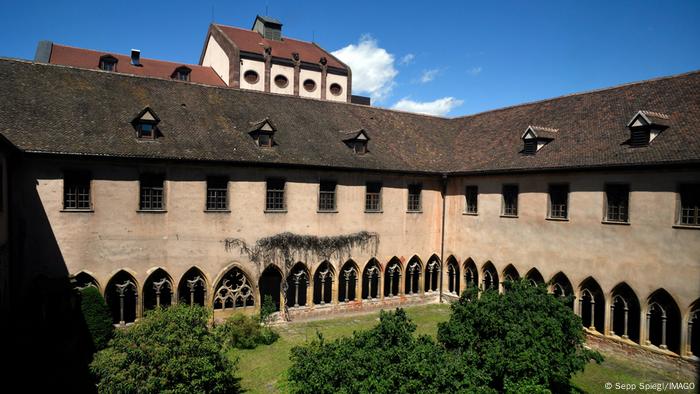 Freshening up the Isenheim Altar
Freshening up the Isenheim Altar
Many art pilgrims in the Musée Unterlinden
The Unterlinden Museum in Colmar, Alsace, has a large collection of objects from the Neolithic to the present day, especially sacred art from the Upper Rhine region from the Middle Ages to the Renaissance. It is housed in a former Dominican convent with a modern extension. The Musée is the second most visited museum in France.
Author: Stefan Dege
-
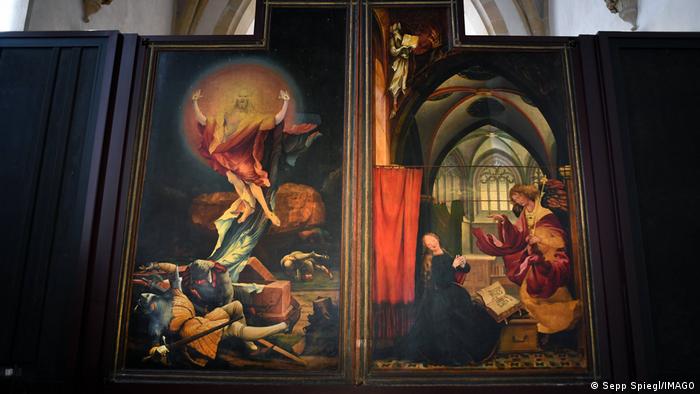 Fresh treatment for the Isenheim Altarpiece
Fresh treatment for the Isenheim Altarpiece
To comfort the sick
Incarnation (right) and Christ's resurrection (left): Matthias Grünewald's walkable altar consists of eleven pictorial parts and a central shrine full of sculptures, carved by Niklaus von Hagenau. The altar was commissioned by the Antoniter monastery in Isenheim near Colmar and was dedicated to Saint Anthony.
-
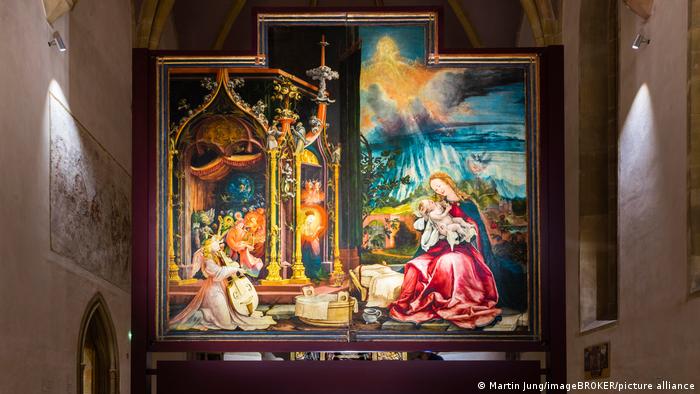 Fresh treatment for the Isenheim Altarpiece
Fresh treatment for the Isenheim Altarpiece
Courage to live from pictures
Antonius is the patron saint of the Antoniter order, which maintained a monastery hospital near Colmar in Grünewald's time. His altar was intended for the church of the hospital. People who had fallen ill with the “Antonius Fire”, a widespread and almost incurable poisoning caused by ergot fungus, were placed in front of the altar. In the face of the holy pictures they should draw new courage to live.
-
 Refreshing treatment for the Isenheim Altarpiece
Refreshing treatment for the Isenheim Altarpiece
Of demons and peaceful conversation
Matthias Grünewald painted what are probably the most gruesome altarpieces north of the Alps. The left panel shows the temptations of Saint Anthony. Antonius lies on the ground where demons torment him. In contrast, on the right is Saint Anthony Abbas deep in peaceful conversation with Paul the Hermit. A raven with a loaf of bread in its beak flies down towards them.
-
 Fresh treatment for the Isenheim Altar
Fresh treatment for the Isenheim Altar
Resurrection and Ascension
Jesus rises from the tomb while the guards tumble dazedly with their armor and swords. The upper body and face of the resurrected are immersed in the light. Jesus dematerializes. The painter's idea for the picture still amazes today. Grünewald's depiction is considered the most radiant resurrection painting in art history.
-
 Fresh treatment for the Isenheim Altar
Fresh treatment for the Isenheim Altar
The Secret of the Rose
Gruinewald created the altarpiece as a convertible altar, which can be opened and closed depending on the time of the church year and the service regulations. This is how the different display sides became visible. This scene with the Madonna and her newborn Jesus is the central Christmas image of the Isenheim Altarpiece. If the image is reversed, Mary's red dress appears as a blooming rose facing the earth.
 Fresh treatment for the Isenheim Altarpiece
Fresh treatment for the Isenheim Altarpiece
Which made even Thomas Mann shudder
The common people were only allowed to use the panels through the rood screen – a kind of barrier. Only fragments of the masterful depictions penetrated the dim light. Grünewald's imagery was more excessive than that of his contemporaries Dürer or Cranach. Centuries later, the passion scene even made Thomas Mann shudder. Freshening up the altar was a challenge for the restorers.
-
 Freshness treatment for the Isenheim Altarpiece
Freshness treatment for the Isenheim Altarpiece
Four-year freshness treatment
The restoration of the Isenheim Altar took four years. The restorers worked practically under the eyes of the visitors. Old overpaintings were removed, original colors exposed, dirt removed. Before being restored to the Musée Unterlinden, the images were X-rayed and examined with 3D microscopes. The restorers also took pigment samples.
-
 Freshening up the Isenheim Altarpiece < h2>Before and after
Freshening up the Isenheim Altarpiece < h2>Before and after
A difference like day and night: Before the restoration, a yellowish film had settled on Grünewald's depiction of Mary with her newborn child. The restorers removed the annoying varnish. Now the touching motif shines in fresh, bright and above all natural colors. “Grünewald would have been delighted with our work,” says chief restorer Antony Pontabry.
-
 Fresh treatment for the Isenheim Altar
Fresh treatment for the Isenheim Altar
Secrets revealed with technology
The panel paintings and colored sculptures were first X-rayed. Chemical and physical analyzes directly on the works of art or on micro-samples revealed the composition of the pigments, binders and dyes. The restoration cost around 1.4 million euros.
-
 Fresh treatment for the Isenheim Altar
Fresh treatment for the Isenheim Altar
painter, well builder, soap maker
As a painter and draftsman, Matthias Grünewald, alias Mathis Gothart-Nithart (around 1480 to 1530), thoroughly stirred up Renaissance painting. But Grünewald, who was considered a strict, ascetic man and was open to new ideas, also worked as a site manager, well builder and soap maker. Presumably, Grünewald was born in Würzburg and died in Halle an der Saale.
-
 Fresh treatment for the Isenheim Altarpiece
Fresh treatment for the Isenheim Altarpiece
Included in the World Cultural Heritage< /h2>
The Isenheim Altarpiece is a late Gothic masterpiece that owes its fame to two 16th-century German masters. In 1793, in the midst of the turmoil of the French Revolution, he was brought from Isenheim to Colmar. Today the altar can be admired in the Musée Unterlinden. It has long been part of the World Cultural Heritage.
-
 Fresh treatment for the Isenheim Altarpiece < h2>Many art pilgrims in the Musée Unterlinden
Fresh treatment for the Isenheim Altarpiece < h2>Many art pilgrims in the Musée Unterlinden
The Unterlinden Museum in Colmar, Alsace, has a large collection of objects from the Neolithic to the present day, especially sacred art from the Upper Rhine region from the Middle Ages to the Renaissance. It is housed in a former Dominican convent with a modern extension. The Musée is the second most visited museum in France.
Author: Stefan Dege
Old overpaintings were removed, original colors exposed, dirt removed and all this under the eyes of amazed museum visitors. Before the restoration in the Alsatian Musée Unterlinden, the images were X-rayed and examined with 3D microscopes. The restorers also took pigment samples during the four-year work, which cost the Société Schongauer, as the museum's sponsor, and the French Ministry of Culture around 1.4 million euros. Director Pantxika De Paepe is more than happy with the result: “The altar has its old beauty back – with new brightness, more light and fresher colors.”

Museum director Pantxika de Paepe is delighted with the successful restoration
The wooden cross on which the martyred Jesus Christ hangs looks oversized. His body, covered with wounds, weighs so heavily that the crossbar bends down and the overstretched arms are torn from the shoulder joints. Cramped in pain, the dead man's nailed hands spread towards the sky – a single cry. At the foot of the cross: John the Baptist and the sorrowful Mother Mary. Matthias Grünewald (around 1480 to 1530) could hardly have painted the Crucifixion more drastic.
Commissioned work for an Antonite monastery
The walkable altar was created between 1512 and 1516 as a commission for the Antoniterkloster in Isenheim, Alsace, located on the old Roman road from Mainz to Basel. Pilgrims on the pilgrimage to Rome stopped here. The Antoniter order ran a hospital here, not far from Colmar, where many people suffering from ergot gangrene were treated. The disease, which was widespread in the Middle Ages, triggered severe burning pain, which is why it was called “holy fire” or “Antonius fire”. There was hardly any cure for it. Grünewald's altar was intended for the monastery church: The sick should find comfort when looking at his panel paintings.
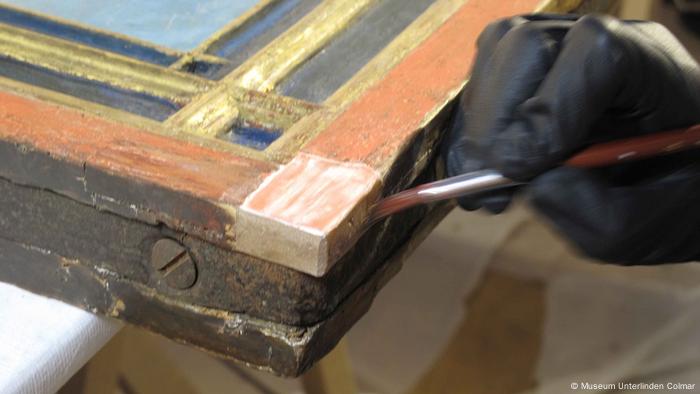
Four The restoration of the Isenheim Altarpiece in Colmar took years
In the Unterlinden Museum in Colmar, a former Dominican convent, Grünewald's main work is on display today: the paintings are on two fixed and four rotating altar wings. The sculptures in the main shrine probably come from the carver Niklaus von Hagenau, who worked in Strasbourg around 1490. They, too, have been extensively restored. “Our altar has changed,” says museum director de Paepe, “panel paintings and sculptures form a visible unit again.”
Grünewald's pictorial worlds, freed from varnish, the risen Christ, the mildly smiling Blessed Mother – they all shine with a new, unusual brilliance and colourfulness. The painted wooden sculptures of Nikolaus von Hagenau have also become more effective. Chief restorer Antony Pontabry summarizes an important result of the analyzes and restorations: “We learned,” he told DW, “that Grünewald's altar was intended from the outset as a joint composition of all the craftsmen and artists involved. Paintings, sculptures and frames were all hand-made in hand.”
Over the centuries, the eleven front sides of the altar have been opened or closed depending on the point in time in the church year and the service regulations. While the monks prayed directly in front of pictures on Advent, Christmas, Passiontide or Mary's feast days, the common people were only allowed to look at the panels through the rood screen: a room-high, richly decorated barrier that separated the choir and nave. Laypersons had no direct access to the altar and could only view the depictions from afar and in the dim light.
Plastic depiction of the torments of Jesus
Watch the video 03:24
The great unknown – The bold pictorial world of Matthias Grünewald – Kultur.21 15.12.2007
Grünewald's imagery was more excessive than that of his contemporaries Dürer or Cranach. In the detailed depiction of the suffering Christ on the cross, the redeeming resurrection scene or in the visitation of Antonius populated by hell beings, Grünewald's naturalistic depiction and mystical world view come together masterfully.
The crucifixion of the Son of God, for example, a common motif in medieval devotional pictures, has an extraordinarily direct effect in Grünewald. North of the Alps, no painter before him had portrayed the execution on Golgotha, the misery and agony of the martyred in such a brutal way: the body of his Jesus is bluish green Wounds covered – signs of ergot smut: The Messiah suffers from “Antonius Fire” – like many people did back then.
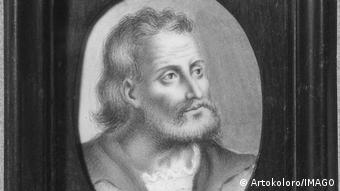
Matthias Grünewald (ca. 1480-1528) in a contemporary drawing
Grünewald's work made a good impression not only on his contemporaries. When the altar was brought to Munich towards the end of the First World War, the writer Thomas Mann saw it in the Alte Pinakothek. He noted in his diary: “Strong impression. The colorful festivity of the Madonna scene almost goes a little too far for me with its sweet shimmering. The grotesque misery of the crucifixion acts as a powerful contrast,” says Mann, but: “Overall, the pictures are among the strongest what ever came before my eyes.” Expressionist artists such as Max Beckmann, Paul Klee, August Macke and Marianne von Werefkin were also inspired by Grünewald. The composer Paul Hindemith wrote a symphony and an opera entitled “Mathis der Maler” in 1935.
Isenheim Altarpiece is a World Heritage Site
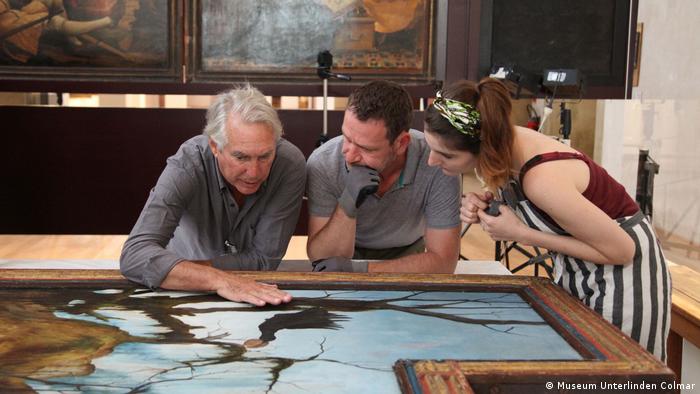
The restoration team examining a Matthias Grünewald painting
In September 1919, the Isenheim Altarpiece returned to Colmar. The writer Elias Canetti stood in front of it for a whole day in 1927: “I saw the body of Christ without pity, the appalling condition of this body seemed true to me,” wrote Canetti. “Before this truth, I became aware of what had puzzled me about crucifixions : its beauty, its transfiguration. What one would have turned away from in reality with horror was to be understood in the picture.”
The processing radically changed the view of Grünewald's masterpiece once again. The Isenheim Altar is now a World Heritage Site. With it, the Musée Unterlinden has one of the most famous masterpieces of the late Gothic period and became the most visited museum in France – right after the Louvre. This should hardly change after the restoration, quite the opposite.




 Fresh treatment for the Isenheim Altarpiece
Fresh treatment for the Isenheim Altarpiece Fresh treatment for the Isenheim Altarpiece
Fresh treatment for the Isenheim Altarpiece Fresh treatment for the Isenheim Altarpiece
Fresh treatment for the Isenheim Altarpiece Fresh treatment for the Isenheim Altar
Fresh treatment for the Isenheim Altar Rejuvenation for the Isenheim Altarpiece
Rejuvenation for the Isenheim Altarpiece Fresh treatment for the Isenheim altar
Fresh treatment for the Isenheim altar Freshness treatment for the Isenheim Altarpiece
Freshness treatment for the Isenheim Altarpiece Fresh treatment for the Isenheim Altarpiece
Fresh treatment for the Isenheim Altarpiece Fresh treatment for the Isenheim Altar
Fresh treatment for the Isenheim Altar Fresh treatment for the Isenheim Altar
Fresh treatment for the Isenheim Altar Fresh treatment for the Isenheim Altarpiece
Fresh treatment for the Isenheim Altarpiece Freshening up the Isenheim Altar
Freshening up the Isenheim Altar Fresh treatment for the Isenheim Altarpiece
Fresh treatment for the Isenheim Altarpiece Fresh treatment for the Isenheim Altarpiece
Fresh treatment for the Isenheim Altarpiece